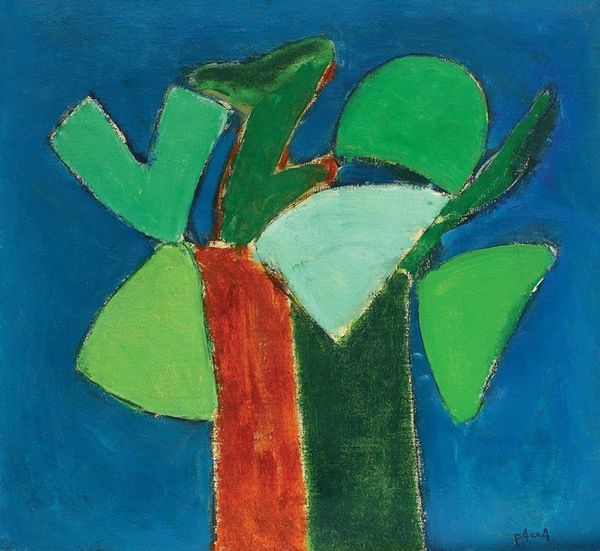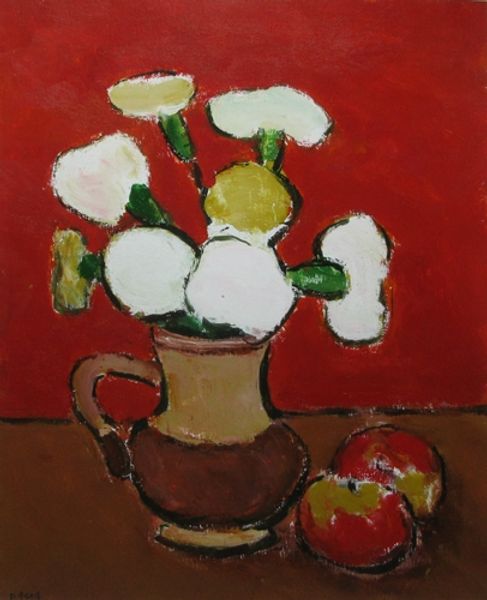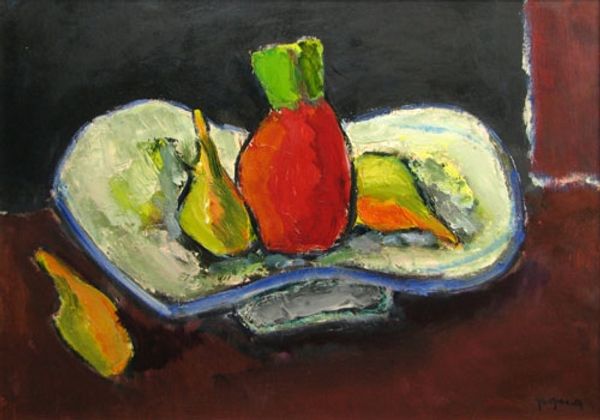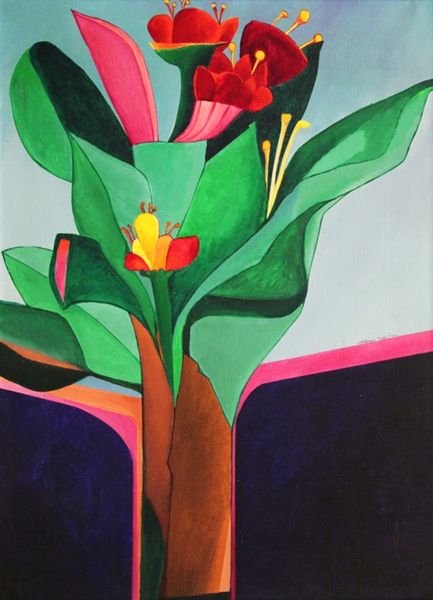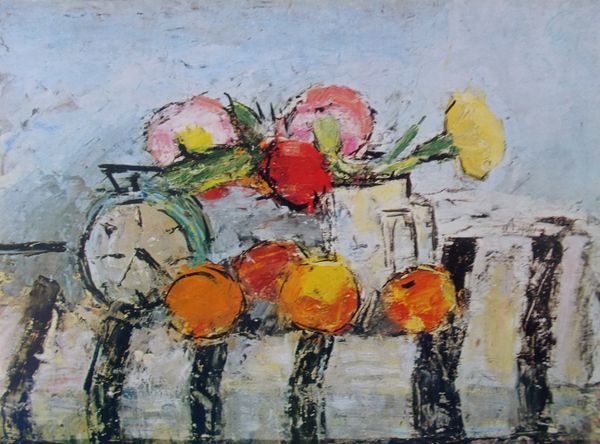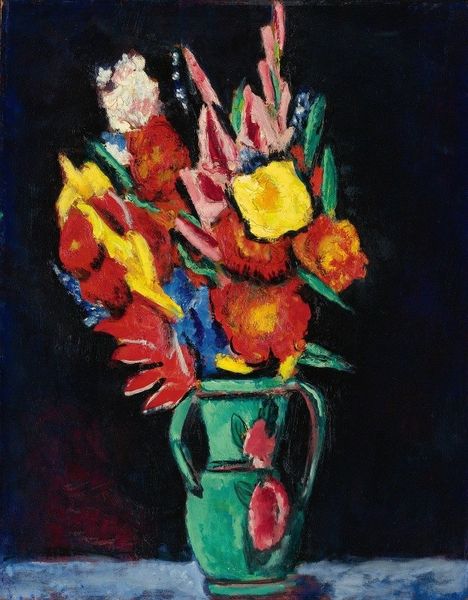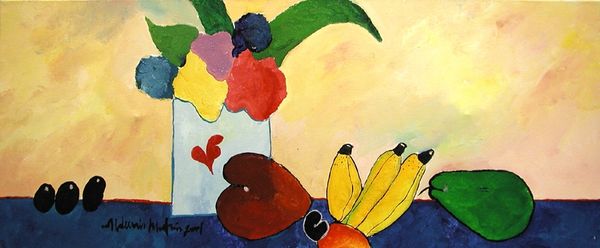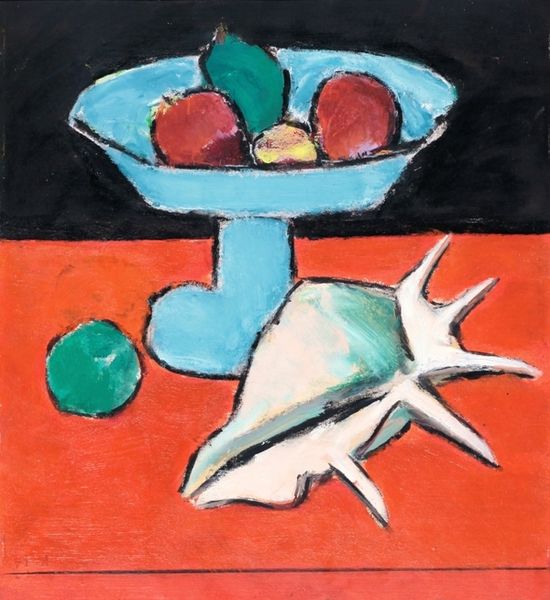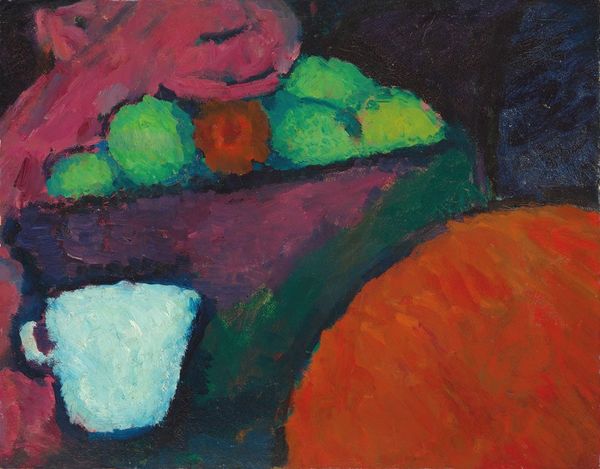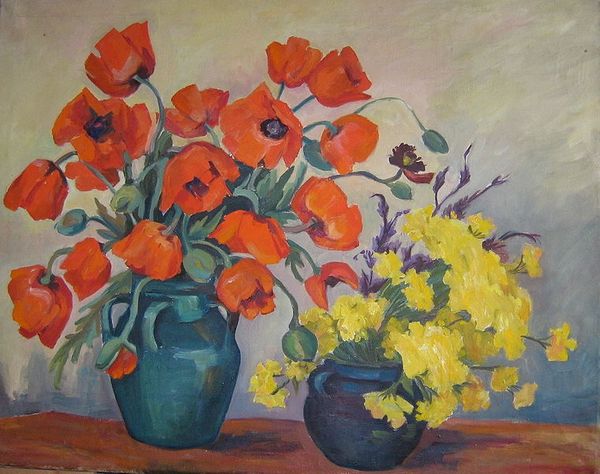
painting, oil-paint, photography, impasto
#
still-life
#
painting
#
oil-paint
#
figuration
#
photography
#
impasto
Copyright: Ion Pacea,Fair Use
Curator: Instantly, I get this powerful wave of childhood, that feeling of unsullied joy! The bright colors, that bold impasto—it's almost naive, and yet there’s such assurance in those thick strokes of oil paint. What do you make of it? Editor: This is a still life called "Lalele," created by the Romanian artist Ion Pacea. While the specific date isn't available, Pacea was active throughout much of the 20th century. The composition is deceptively simple; however, these unrefined bright color combinations create visual friction within a formal composition, adding a modernist take. Curator: Yes! Friction is a great word. I love how he throws together that clashing bright yellow tablecloth with the fiery red tulips! There is so much vigor in what others consider clashing—something defiant. Editor: It's certainly vibrant. Still lifes, particularly depictions of flowers, are interesting. On the surface, they may appear decorative and safe, intended to demonstrate beauty in domestic contexts. However, these works historically presented opportunities for artists to make symbolic statements on temporality, value, and society. Curator: Definitely. You see, to me, those tulips aren’t just sitting pretty. There's an almost desperate reaching for light, they feel restless, as if this image represents both their vitality and fragility all at once. That simple palette knife in the foreground adds an extra note, it’s there to shape and control, but it might also just cut things short. Editor: The inclusion of everyday objects such as a palette knife shifts it into more personal reflection and expression. In Romania in that period, art production became carefully monitored. Works that engaged too overtly with symbolism that deviated from specific parameters faced critique. Artists adopted modes that seemingly only depicted day-to-day objects to mask complex conceptual strategies. Curator: Absolutely. Which gives "Lalele" even greater strength. Behind its simple pleasure, there's such profound emotional depth. So, I can continue to delve into its complexities but what initially felt intuitive and straightforward now speaks with such unexpected emotion and conviction. Editor: Indeed. This type of careful ambiguity has often challenged art historical categorization. As viewers, it’s important to explore how such vibrant approaches complicate how we evaluate art in broader social and political contexts.
Comments
No comments
Be the first to comment and join the conversation on the ultimate creative platform.
